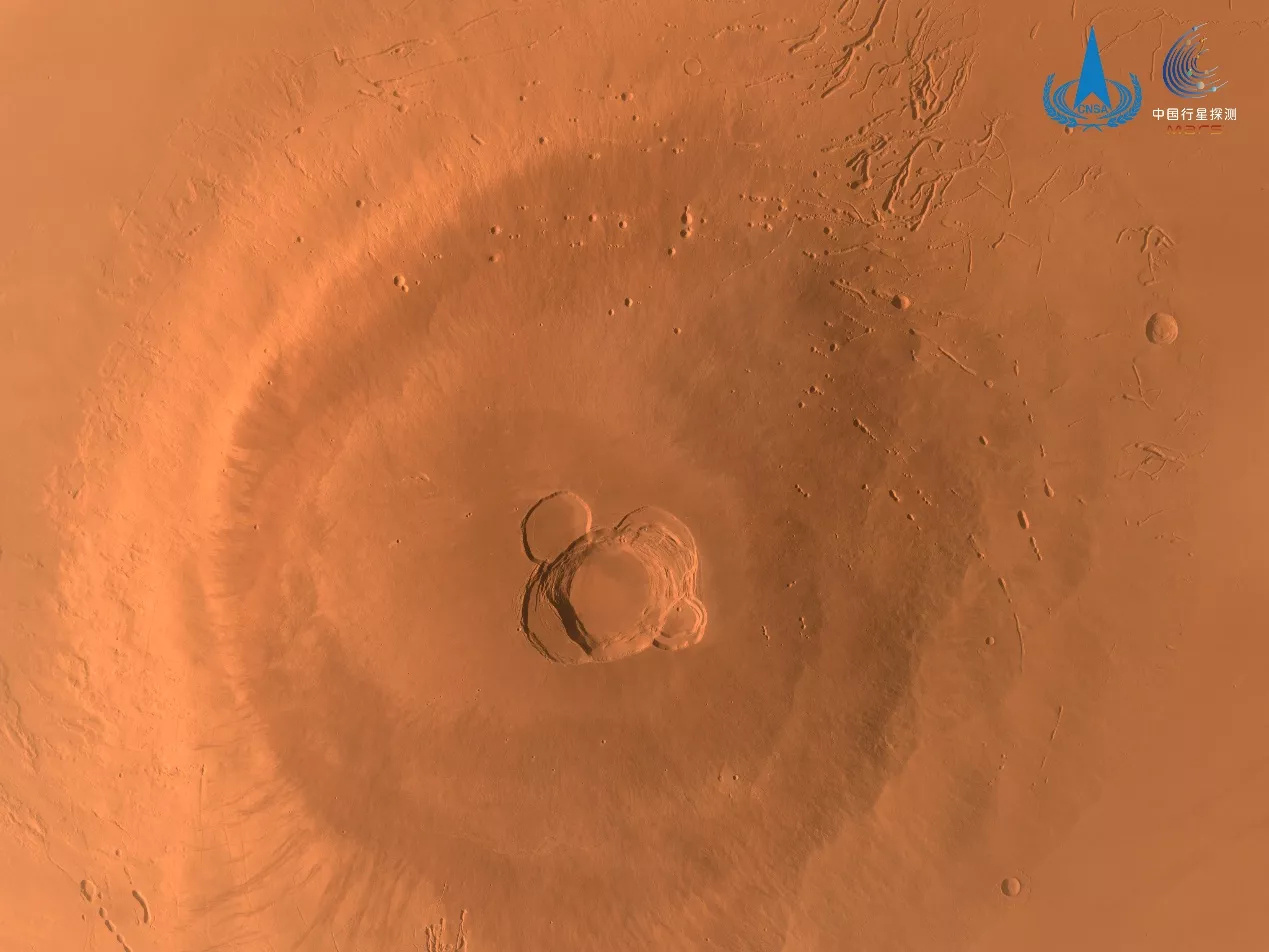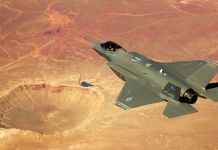China’s first interplanetary exploration mission, the Tianwen-1 Mars probe, was successfully launched on July 23, 2020. It had achieved an extraordinary feat by orbiting, landing, and traveling across the Red Planet. Two years later, the Tianwen-1 probe has come to an end.
On June 29, China’s Tianwen-1 probe captured the latest images of Mars. The country’s China National Space Administration (CNSA) declared that the mission had accomplished all of its stated objectives, CGTN reported.
The probe obtained data, including images of medium resolution covering the entire red planet, and completed exploration assignments with various scientific payloads.
The photographs, which the space agency shared on social media, display the rough terrain of the Martian landscape, including the south pole ice sheet, shield volcanoes, impact craters, and cliffs and ridges of the Valles Marineris canyons, one of the enormous canyons in the solar system, CNN reported.

The pictures were collected by the probe’s orbiter, which made 1,344 orbits around Mars and took pictures of the planet from all directions as the rover investigated the surface, according to CNSA.
It also reportedly acquired images of the Martian south pole, where almost all of Mars’ water is believed to be locked. Finding water on the red planet would be the first step toward life’s potential on the Martian surface.
Thirteen pieces of scientific payload installed aboard the Tianwen-1 Mars mission have collected 1,040 gigabytes of original scientific data after two years of operation and planetary exploration.
Mission accomplished! CNSA announces Tianwen-1 orbiter has obtained global medium-resolution images of Mars, after 1344 orbits in 706 days, as of June 29. The probe has completed all planned missions and will continue remote sensing work and perform some technology tests…. pic.twitter.com/ml2M8smEFr
— China 'N Asia Spaceflight? (@CNSpaceflight) June 29, 2022
The ground crew processed the data to create standard scientific products, which were then delivered monthly to scientific research teams for further analysis and investigation. The relevant scientific achievements have been published in well-known academic journals, both at home and abroad.
According to the CNSA, the scientific data will be available to researchers worldwide, including United States NASA and Europe’s ESA, at an appropriate time. They would be welcome to apply for research over the data to advance humanity’s exploration of the universe.

China’s Mars Exploration And Accomplishment
Tianwen-1, China’s first Mars mission, was launched in July 2020 and had an orbiter, a lander, and a rover with 13 research equipment on board. It successfully touched down on the Martian plain Utopia Planitia in May 2021. The Chinese government declared Tianwen-1 a success in late 2021.
Tianwen 1 celebrated its first anniversary on the red planet in February 2022. The Tianwen 1 spacecraft entered orbit around Mars on February 10, 2021. The China National Space Administration published spectacular footage of the event shortly after, showing the orbiter passing behind Mars while firing engines to slow down and enter orbit.
China's Tianwen-1 spacecraft has acquired imagery data covering all of Mars including visuals of its south pole https://t.co/Y0J0wMd7hh pic.twitter.com/vBisnOSeg2
— Reuters (@Reuters) June 29, 2022
In the past 706 days, the orbiter has moved around Mars 1,344 times, gathering mid-resolution visual data of the whole planet’s surface. The six-wheeled rover collected data on the geological composition, atmosphere, environment, and soil of Mars.
The rover, given the name Zhurong after the fire god of Chinese mythology, covered over two kilometers on Mars before hibernating on May 18 because of the harsh winter conditions. Work is anticipated to continue when spring arrives in December, according to CGTN.
Landing on Mars is one of the most challenging tasks in spaceflight. Since Mars has an atmosphere unlike the Moon, the landers must be shielded from the heat produced during descent. Therefore, Retrorockets are necessary because the air is too thin for a parachute to slow a lander by itself.
1st Country To Study Martian Samples?
It is also pertinent to mention that China is competing against the other global powers in space, with the rivalry intensifying with every planned mission. It was recently revealed that China is geared to become the first country in the world to bring back rocks from Mars to Earth, as reported by the EurAsian Times.
A top space official in China has confirmed that Beijing plans to bring rocks from Mars by 2031, making it the first country to get Martian samples to Earth.
China’s schedule is two years ahead of the US-European Mars mission to return samples to Earth. The latter announced a postponement in March to undertake a more sophisticated mission than China’s.
The exploration of Mars has become the cornerstone of the US-China space race that has been progressing rapidly in tandem with the geopolitical rivalry unraveling on the ground. Only the United States and the former Soviet Union had successfully landed a spacecraft on Mars before China’s success with Tianwen-1.
#Mars probe #Tianwen1 sending back the latest images from the red planet. #China @CGTNOfficial pic.twitter.com/Yem145Xo75
— libijian李碧建 (@libijian2) June 29, 2022
Moreover, China was the first country to attempt sending both an orbiter and a rover on its first homegrown Mars mission with Tianwen-1. On its part, NASA had launched several orbiters to Mars before making any attempt at a landing.
However, besides competition, there has also been a fair share of cooperation between CNSA and other states and space agencies. As part of a Sino-European scientific collaboration, Zhurong has also tested transmitting data through the Mars Express spacecraft of the ESA.
Additionally, CNSA also collaborated with observatories in numerous countries, including those in Russia, Germany, Italy, Australia, and South Africa, to conduct observational studies and scientific investigations in a variety of areas, including the solar wind surrounding the solar outage, using the Tianwen-1 orbiter and Mars Express.
The CNSA stated that such collaboration had produced fruitful outcomes, advanced human knowledge, and positively impacted efforts to create a scientific community with a shared future for all people.
With a spate of missions planned to the red planet before the end of this decade, there could be room for more collaboration besides the apparent competition.
- Contact the author at sakshi.tiwari9555@gmail.com
- Follow EurAsian Times on Google News





